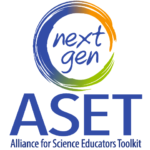
Making Explicit Connections:
SEPs and CCCs
Overview
An important feature of lessons and units that align with the vision of three-dimensional science teaching, is that explicit and meaningful connections are made among the three dimensions.
“A coherent and consistent approach throughout grades K-12 is key to realizing the vision for science and engineering education embodied in the framework: that students, over multiple years of school, actively engage in science and engineering practices and apply crosscutting concepts to deepen their understanding of each field’s disciplinary core ideas.” (NRC, 2012, p. 2, emphasis added)
In the case of linking Science and Engineering Practices (SEPs) with Crosscutting Concepts (CCCs), the larger question to be asked is: How is your lesson or unit making explicit connections between the SEPs and CCCs targeted in instruction?
Instructions for the 3D Map
- List specific examples from your lesson or unit where students are making explicit connections between particular components of the selected SEPs and particular components of the selected CCCs.
- Describe your reasoning for how the selected SEP and CCC are linked in each example.
Guiding Questions
In identifying explicit connections between SEPs and CCCs in your lesson or unit, you should ask yourself:
- How is student engagement in a particular component of a SEP helping to deepen their knowledge of a particular component of a CCC?
- Example: Students may use models [SEP #2] to identify and describe cause and effect relationships [CCC #2], which they then compare to other cause and effect relationships they have seen in previous units.
- How is students’ deepening knowledge of particular CCCs helping to develop their ability to engage in SEPs?
- Example: Students may describe the relationships between the structures and functions of particular components of a system [CCC #6], which they then use to revise a design solution to better solve a problem [SEP #6].
- Are the connections between SEPs and CCCs made explicit to the students?
References
National Research Council. (2012). A Framework for K-12 Science Education: Practices, Crosscutting Concepts, and Core Ideas. Committee on a Conceptual Framework for New K-12 Science Education Standards. Board on Science Education, Division of Behavioral and Social Sciences and Education. Washington, DC: The National Academies Press.
